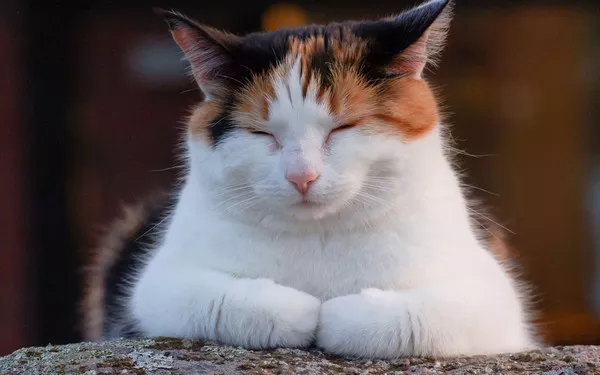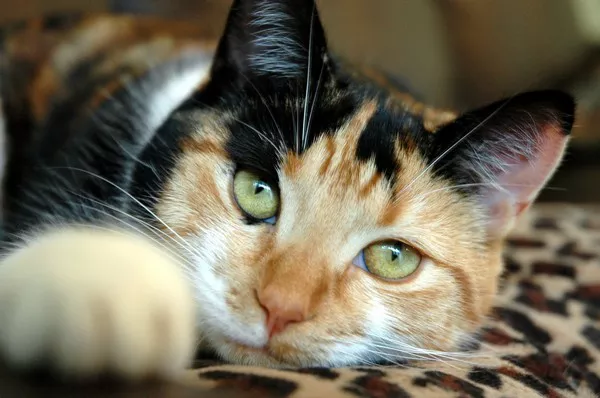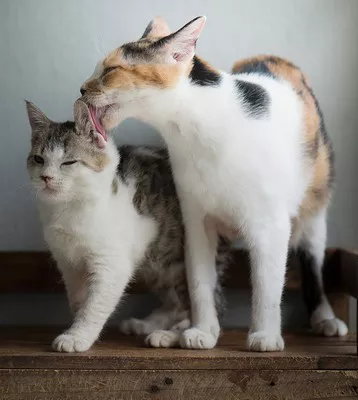Calico cats, with their distinctive tricolor coats and captivating personalities, have a special place in the hearts of feline enthusiasts. However, a vexing issue that some calico cat owners may face is the phenomenon of inappropriate urination. The mystery of why calico cats pee everywhere can be both frustrating and concerning for cat guardians. In this comprehensive exploration, we delve into the potential reasons behind this behavior, considering various factors that may contribute to a calico cat’s tendency to urinate in undesirable locations.
The Complexity of Feline Behavior
Understanding the Urinary Instinct
Before delving into the specific challenges faced by calico cats, it’s crucial to acknowledge the inherent complexities of feline behavior, especially when it comes to urinary habits. Cats, by nature, are territorial animals with a well-developed sense of smell and a preference for marking their territory through urine. This behavior is deeply ingrained in their evolutionary history and serves multiple purposes, including communication, establishing territory boundaries, and attracting potential mates.
Inappropriate urination, where a cat eliminates outside of the litter box, is a behavioral issue that can arise due to various factors. It’s essential to approach this matter with patience, understanding, and a willingness to explore potential causes that may be unique to each individual cat.
The Calico Conundrum
The Unique Traits of Calico Cats
Calico cats, characterized by their tricolor coats of white, black, and orange (or variations of these colors), possess a distinctive genetic makeup that sets them apart. The interaction of X and Y chromosomes in calico cats results in the expression of the calico coat pattern, with most calicos being female. The interplay of genetics not only contributes to their visual allure but may also influence their temperament and behavior.
While calico cats, like any other feline, can exhibit a range of personalities, the unique combination of genes that govern their coat color may introduce certain behavioral nuances. Understanding these traits and how they intersect with the broader spectrum of feline behavior is crucial for deciphering why some calico cats may engage in inappropriate urination.
Potential Reasons for Inappropriate Urination
1. Territorial Marking: Calico cats, with their strong territorial instincts, may resort to marking their territory through urine. This behavior can be exacerbated by the presence of other animals, changes in the household environment, or the introduction of new family members or pets. Understanding the triggers for territorial marking is key to addressing inappropriate urination.
2. Stress and Anxiety: Calico cats, like many felines, may be sensitive to changes in their environment. Stressors such as moving to a new home, changes in routine, or the presence of unfamiliar people or animals can contribute to anxiety. In response, some calico cats may express their distress through inappropriate urination as a coping mechanism.
3. Medical Issues: Inappropriate urination can be a sign of underlying medical issues, such as urinary tract infections, kidney problems, or diabetes. Calico cats, like any other breed, may be susceptible to these conditions. It’s crucial to rule out medical causes by consulting with a veterinarian and conducting necessary diagnostic tests.
4. Litter Box Aversion: Calico cats may develop aversions to their litter box due to various reasons, such as dissatisfaction with the type of litter, the cleanliness of the box, or its location. Ensuring that the litter box meets the cat’s preferences and is maintained in a hygienic condition is essential for preventing aversion-related inappropriate urination.
5. Social Hierarchy and Conflict: The presence of multiple cats in a household can lead to social dynamics and conflicts. Calico cats, exhibiting territorial tendencies, may engage in inappropriate urination as a response to perceived threats or challenges from other cats. Understanding and managing the social hierarchy within a multi-cat household is crucial for preventing such behavior.
6. Hormonal Influences: Female calico cats, in particular, may display hormonal influences that impact their behavior, including marking behavior. Changes in hormonal levels, such as during the estrus cycle, pregnancy, or after giving birth, may contribute to a calico cat’s inclination to mark territory through urination.
Addressing Inappropriate Urination
A Holistic Approach to Behavioral Challenges
Addressing inappropriate urination in calico cats requires a holistic approach that considers both behavioral and environmental factors. By adopting a systematic strategy, cat guardians can work towards identifying and resolving the root causes of this behavior. Here are essential steps to address inappropriate urination:
1. Consult with a Veterinarian: Before addressing behavioral aspects, it’s crucial to rule out any underlying medical issues. A veterinary examination, including urine analysis and relevant tests, can help identify and address potential health concerns contributing to inappropriate urination.
2. Maintain a Consistent Routine: Calico cats, like many felines, thrive on routine. Maintaining consistency in feeding times, play sessions, and litter box maintenance can help reduce stress and anxiety. Changes in routine should be introduced gradually to allow for adaptation.
3. Provide a Suitable Litter Box Environment: Ensure that the litter box is clean, easily accessible, and located in a quiet and private area. Experiment with different types of litter to find the one that your calico cat prefers. Some cats may have preferences for specific textures or scents.
4. Create a Comfortable Environment: Address any environmental stressors that may be contributing to inappropriate urination. Calico cats may be particularly sensitive to changes, so minimizing disruptions, providing hiding spots, and offering vertical spaces for climbing and observation can create a secure and comfortable environment.
5. Manage Multi-Cat Dynamics: In a multi-cat household, managing social dynamics is crucial. Provide separate feeding areas, multiple litter boxes, and individualized attention to each cat. This helps prevent conflicts and reduces the likelihood of territorial marking.
6. Consider Behavioral Modification Techniques: Utilize positive reinforcement techniques to encourage appropriate behavior. Reward your calico cat for using the litter box and create positive associations with designated elimination areas. Avoid punishment, as it may exacerbate stress and anxiety.
7. Use Pheromone Products: Synthetic feline facial pheromones, available in the form of diffusers or sprays, can create a calming environment for calico cats. These pheromones mimic the natural scent markings that cats use to establish familiarity and comfort in their surroundings.
8. Consult with a Feline Behaviorist: If behavioral challenges persist, seeking the guidance of a feline behaviorist or certified cat behavior consultant can provide personalized insights and strategies. These professionals can assess the specific dynamics of your calico cat’s behavior and recommend tailored solutions.
Conclusion
In conclusion, the mystery of why some calico cats pee everywhere is a complex puzzle with multifaceted answers. Understanding the unique genetic makeup, behavioral traits, and potential stressors that may influence a calico cat’s urinary habits is essential for resolving this challenging issue.
As cat guardians, approaching inappropriate urination with patience, empathy, and a commitment to addressing underlying causes can pave the way for a harmonious and comfortable environment for both the calico cat and its human companions. By considering the holistic well-being of these tricolor feline marvels, we can unravel the enigma of inappropriate urination and foster a nurturing relationship that celebrates the captivating essence of calico cats.


























